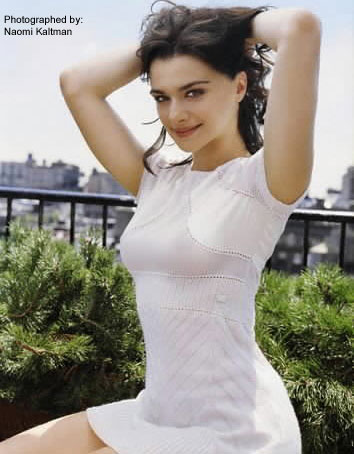Raj Kapoor – The Stylish Showman of Bollywood.
Raj Kapoor can be considered as the most colourful personality that had glorified the Indian silver screen for the last 60 years. Not only was he a stylish showman, and more than that he was a grand creator with majestic vision. Born in 1924, Raj Kapoor, learnt all the skills relating to direction in films within short period of time. Having the rich legacy of acting in Prithvi Theatres created by his father, he acted in some of the drama launched by his father and stormed into the film arena with the film Aag in 1947, which was directed by himself.

In Barsaat, 1949, Raj Kapoor formed a majestic romantic pair with Nargis and music directors Shankar Jaikishan, lyricist Hasrat Jaipuri, Shailendra, cameraman Radhu Karmakar and other dignitaries who contributed to RK films. The romantic story was a super duper hit with Lata’s songs like “jiya beqararhai”, “hawa me urta jaye”, etc, becoming trend setters. Within a shot time Raj Kapoor started making films which conveyed a very strong social message. His film Awara, 1951, was based on the theme that human being is a victim of circumstances and even if the son of a barrister is uprooted from his royal family which happened to Raj Kapoor in the film and brought amongst thieves and lawbreakers (played by KN Singh) he ends up being an awara, who cannot give his father’s recognition. It has happened with a lot of people in India, who got involved in unlawful activities due to circumstances. His film was well appreciated in Russia, and Raj Kapoor became an international figure. The same film had shown other directors how to picturise dream sequence songs like “ghar aya mera pardesi”. Besides Shankar Jaikishan’s prelude in the song “awara hoon” sung my Mukesh depicted Raj Kapoor as the pied piper of Hamlin, and after that film in every film of Raj Kapoor, the prelude used to make people understand that he is appearing.
After having success in films like Andaz, 1949, directed by Mehboob Khan opposite dilip Kumar, Aah, 1953, Raj Kapoor produced, directed and acted in the next blockbuster Shri 420, in 1955. All the songs in the film including “mur murk ke na dekh”, “pyar hua ikrar hua”, “dil ka haal sune dilwala”, “ramaiya vasta maiya” were super hits and the film used the available singing giants in India including Rafi, Mukesh, Manna Dey, Lata, Asha, etc. Raj Kapoor’s display about the corruption in society with the adaptation of mannerism of Charlie Chaplin amused the viewers. The image of Nadira depicted in the film gave her the identity of villanious performer for the rest of her career. In Jaagte Raho, 1956, Raj Kapoor acted in a film with hardly any dialogues and showed the social crimes taking place in different floors of the same building where a poor villager can feel ashamed of. The film won international award in Berlin film festival.
Raj Kapoor’s other films like Anari, 1959, opposite Nutandirected by Rishikesh Mukherjee, Jis Desh Me Ganga Behti Hai, 1960, opposite Padmini, also had strong social message and depicted Nehru’s dream of socialism embedded in them. The songs in all these films were superhits and Raj Kapoor convinced the group of dacoits operating in the Chambal region to surrender before the police in Jis Desh Me Ganga Behti Hai. He received filmfare award for the best actor for both these films. With the advent of colour Raj Kapoor’s Sangam, 1964, showing tripartite affair with Rajender Kumar and Vijayantimala became the biggest hit of that age. Raj Kapoor’s other films like Phir Subah Hogi, 1958, opposite Mala Sinha, Chalia, 1960, opposite Nutan, Dil Hi To Hai, 1961, opposite Nutan, Teesri Kasam, 1966, opposite Wahida Rehman, Diwana, 1967, opposite Saira Banu, Around the world, 1967, opposite Rajashri, Sapno Ka Saudagar,1968, opposite Hema Malini, etc., all had classic picturisation, strong performance and outstanding music. From the 70s Raj Kapoor mainly concentrated on production and direction of films including Mera Naam Joker, 1971, Bobby, 1973, Satyam Shivam Sundaram, 1977, Prem Rog, 1982, Ram Teri Ganga Maili, 1985, etc.

Raj Kapoor’s films dealt with diversified subjects, sometimes involving teenage romance, sometimes oppression of women, sometimes, corruption in the society. He showed the other directors that film is a medium from where lot of messages can be given to the society. As he could play more than 10 instruments while giving lips in songs picturised in his films it always appeared that he was singing, the skill which Rishi Kapoor, his son developed in later age. He changed his team of music composers from Shankar Jaikishan, to Laxmikant Pyarellal and Ravindra Jain and in all his films there was meaningful music which did reach out to the masses. If the films where Raj Kapoor acted as hero can be scanned it will be found that he has almost worked with every giant music composer of that age, Naushad composed music for Andaz, Dastan, etc., Roshan for Dil Hi To Hai, Salil Choudhury for Jagte Raho, Kalyanji Anandji for Chalia, Dulha Dulhan, OP Nayyar for Do Ustad, Khayyam for Phir Subah Hogi, Dattaram for Parvarish, RD Burman for Dharam Karam, etc., to name a few. There was a time when Raj Kapoor lost count about the number of awards he had received, sometimes as best actor, or best director, or best producer, etc. He died in 1988 after receiving Dada Saheb Falke award, the greatest award for any film personality in India. His films should be restored for social awakening, musical value and lessons relating to strong picturisation of sequences.

